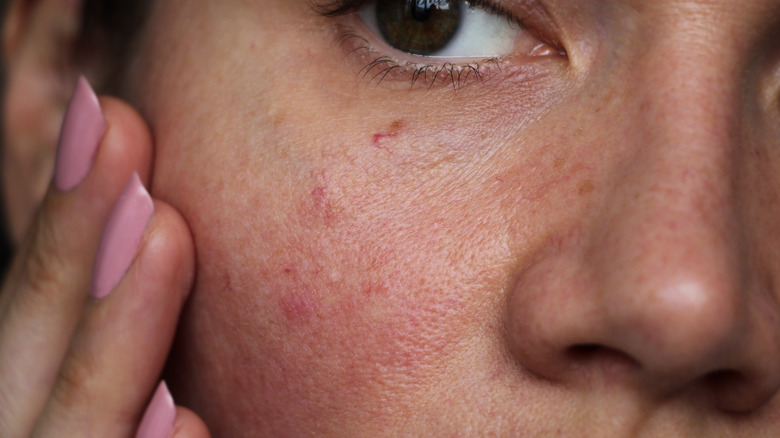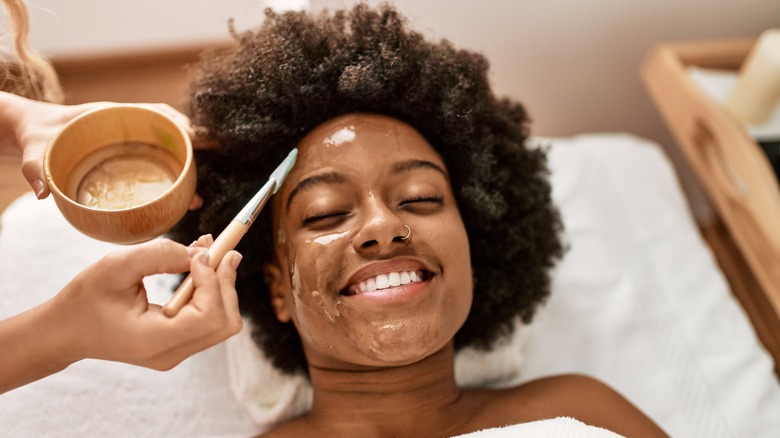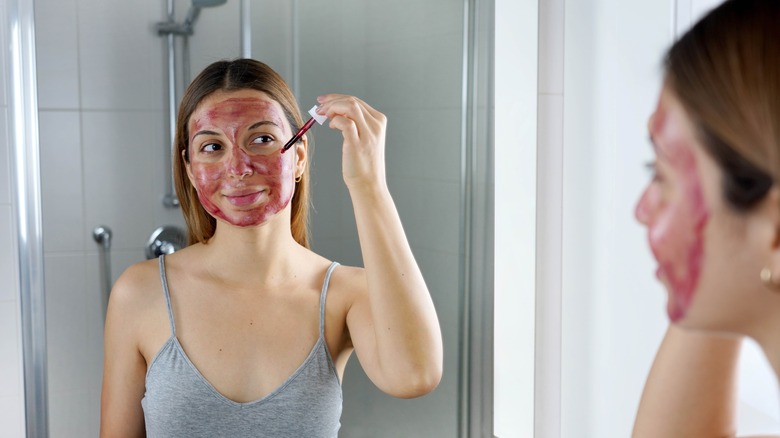If You Have Uneven Skin Texture, Chemical Peels Might Be Your New Best Friend
We may receive a commission on purchases made from links.
You have likely heard of uneven skin tone, where the colors of your skin don't match throughout. In fact, according to Dermatologica, uneven skin tone is an extensive term consisting of skin with hyperpigmentation, discoloration, dry spots, inflammation, and blotchiness. Since so many people have this skin type, many makeups, cleansers, and treatments are marketed toward this skin condition. But what if you have uneven skin texture? This is entirely different from uneven skin tone.
Board-certified dermatologist Dr. Loretta Ciraldo told Cosmopolitan that uneven skin texture is the bumps, rough patches, or not-so-smooth areas of our skin that we can feel when we run our hands over our face. Many things can cause this texture on the skin, whether it be from skin conditions like psoriasis or contact dermatitis, acne scars, or even overexposure to the sun. Because of this, solving our uneven skin texture issues can be more complex than we think. If you suffer from this, you may consider a chemical peel.
What is a chemical peel and why is it great for uneven skin texture
Uneven skin texture can happen to anyone and for many different reasons. But overall, most people with a sudden onset of uneven skin texture can likely blame their dry skin and dirt buildup, per dermatologist Dr. Rafaeloff of Le Jolie Medi Spa via Camille Styles. And while Dr. Rafaeloff points to many things, like diet, to help fix texture, a great go-to option is to get a chemical peel.
According to Mayo Clinic, a chemical peel is when a layer of chemicals is applied to your skin to remove the top layer, which can consist of dry skin cells and unwanted buildup from dirt and products. There are three different levels of chemical peels. A light chemical peel is something you can get more frequently — think every few weeks — and helps your skin avoid that buildup that can cause uneven textures. If your issues are more severe than that and your texture is due to conditions like acne scars, a medium chemical peel is probably better suited for your needs. There is also a deep chemical peel but speak with your dermatologist before going this route.
What to expect from a chemical peel
A chemical peel may sound intense, but for the most part, it is pretty simple. Often done right in the office, a chemical peel is as simple as your doctor applying a solution, letting it sit, and wiping it away, per Healthline. A deep chemical peel requires a bit more, though; some people may require heart monitoring, numbing agents, or even sedation. And while the procedure only lasts about 15 minutes, recovery takes a bit of time. A light peel has about a seven-day recovery time, while a deep peel can take two weeks, with the redness remaining for months.
According to Byrdie, as we age, getting rid of our uneven skin texture gets harder and harder. If you have tried everything from cleansers to changing your diet without success, a chemical peel may be just the thing your skin needs to finally heal. If you cannot afford an in-office peel, Dr. Ciraldo recommends using an at-home glycolic peel, which is stronger than your average facial peel but still safe to use without a dermatologist present. You can also opt for other do-it-yourself methods, like exfoliating and adding coconut oil to your routine.


